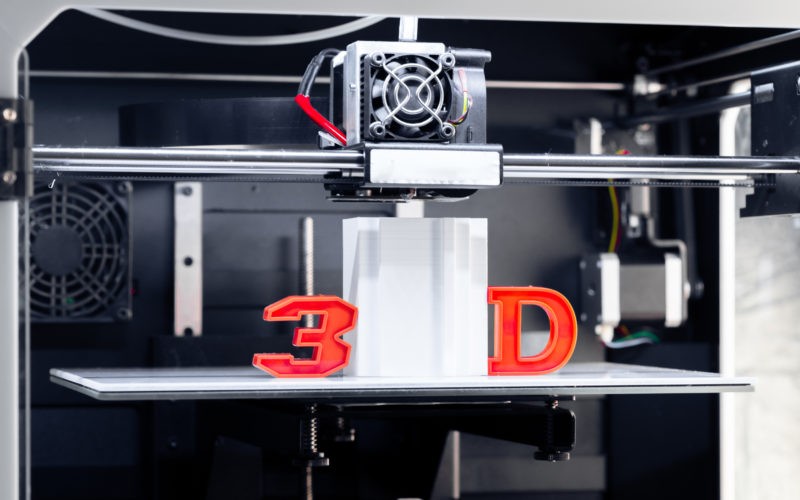Multi Jet Fusion (MJF) printers are gaining popularity in industrial 3D printing because they’re fast, accurate, and cost-effective. Yet, many still misunderstand how it works. Even though this new technology is becoming increasingly popular in sectors ranging from automotive to healthcare, there are still some misconceptions about it. Is it just another form of SLS? Only suitable for prototypes? Too expensive for small businesses? Let’s clear the air by debunking 10 of the most common myths about Multi Jet Fusion and shedding light on what it truly offers today’s manufacturers.
Myth 1: MJF Is Just Another Type of SLS
MJF applies a detailing and fusing agent using inkjet arrays and infrared light to provide faster print speeds, consistent mechanical qualities, and finer resolution. This technology stands out due to its unique speed, reproducibility, and quality mechanism.
Myth 2: MJF Is a Niche Technology
Since its commercial launch in 2016, the Multi Jet Fusion 3D printer technology has advanced quickly and is now extensively used by multinational companies, including Siemens, BMW, and Johnson & Johnson.
Myth 3: MJF Is Only Suitable for Prototypes
Nowadays, various sectors employ Multi-Jet Fusion (MJF) for full-scale manufacturing and prototyping. Beyond conventional techniques, MJF allows decentralized, on-demand production by printing functional components with excellent durability and isotropic qualities.
Myth 4: MJF Parts Lack Surface Quality
Due to their surface finish, some say that Multi Jet Fusion (MJF) parts don’t look good enough for high-end products. However, many ways exist to improve how these parts look after they’re printed. Techniques like painting, vapor smoothing, dyeing, and media tumbling can make the surface much smoother and more attractive. These post-processing steps help give MJF parts a high-quality appearance suitable for top-level consumer products.
Myth 5: MJF Is Too Expensive for Small Businesses
Small businesses can easily get competitive pricing per part and fast turnaround. This strategy clears up the myth that MJF is only used by big companies by making high-performance 3D printing available to everyone.
Myth 6: MJF Is Difficult to Integrate Into Existing Workflows
Multi Jet Fusion (MJF) is a versatile manufacturing method that can easily add to current processes. It can be used to make anything from CAD files to finished products. Its automation and modular design save downtime by enabling printing and cooling to happen at the same time.
Myth 7: MJF Is Not Environmentally Friendly
The world is shifting to eco-friendly materials, and contrary to popular belief, Multi Jet Fusion (MJF) is one of the more environmentally friendly 3D printing technologies on the market right now. Its regulated temperature environment, which maintains powder quality and high material reuse rates, makes MJF one of the more environmentally friendly 3D printing processes.
Myth 8: MJF Printers Are Slow
A Multi Jet Fusion 3D printer is sometimes criticized for being sluggish. However, because of its broad pass printing, MJF creates precise, repeatable prints appropriate for precision applications such as jigs, fixtures, enclosures, and mechanical parts. The absence of support infrastructure also lowers post-processing labor and waste.
Myth 9: MJF Materials Are Limited
With systems that support TPU for flexible applications, Nylon-12 GF for additional stiffness, and Nylon-11 for impact-resistant components, MJF’s material flexibility has increased. Third-party certified materials and open material platforms are driving more progress in MJF-compatible polymers. This shows how flexible it is for designers and engineers right now.
Myth 10: MJF Lacks Industrial-Grade Validation
Its use in regulated and safety-critical sectors has been validated by certifications such as ISO 9001 and biocompatibility requirements. Today’s large-scale application of MJF, a reliable, production-grade solution, offers speed, accuracy, and efficiency in full-scale manufacturing, prototyping, and the creation of customized goods.
Conclusion
Many old ideas about Multi Jet Fusion (MJF) no longer match what the technology can do today. MJF has dramatically improved and is now known for using various materials, meeting strict industry standards and offering fast, eco-friendly, and scalable production. It’s no longer just for testing ideas; industries now rely on MJF to create prototypes and make final products in large quantities. As more companies turn to MJF for their manufacturing needs, it’s clear that this 3D printing method is not just staying in the market; it’s becoming a leader in the field.












